- Home
- /
- Healthy Meal
- /
- Meal Planning for Busy...
- /
- Meal Planning for Busy...
Listen to 5 min episode on this topic here:
In Russian:
In English:
Listen to all episodes in our Podcasts:
Apple podcast ??|??|Google podcast ??|??
- 1. Why is it needed?
- 2. Getting Started with Meal Planning
- 3. Creating a Meal Planning Toolkit
- 4. Understanding Your Dietary Requirements
- 5. The Meal Planning Process
- 6. Recipe Collection and Inspiration
- 7. Grocery Shopping Made Easy: Stress-Free Meal Planning
- 8. Meal Preparation Techniques: The Key to Efficiency
- 9. Storage and Labeling: The Final Touch to Success
- 10. Meal Planning for Special Occasions: Celebrations Made Simple
- 11. Eating Out and On-the-Go: Busy Days with Ease
- 12. Recipes for Every Occasion: Versatile and Delicious Planning
- 13. Common Meal Planning Challenges: Overcoming Hurdles with Ease
- 14. Adapting Meal Planning to Your Lifestyle
- 15. Sustainability and Meal Planning: A Recipe for a Greener World
- 16. Meal Planning for Health and Wellness
- 17. The Future of Meal Planning: Innovation and Convenience
In the fast-paced rhythm of today’s world, life often feels like a relentless marathon. Between work, family, social commitments, and personal pursuits, the demands on our time are ceaseless. In the midst of this whirlwind, one vital aspect of our lives frequently takes a backseat: nutrition.
For many, busy schedules lead to hasty food choices—grabbing fast food on the way to a meeting, snacking on whatever’s convenient, or skipping meals altogether. The consequences of such eating habits ripple through our health and well-being, leaving us fatigued, sluggish, and often far from our nutritional goals.
Enter the life-changing practice of meal planning. It’s a method that not only simplifies the complexities of your daily diet but also nourishes your body, delights your taste buds, and brings a sense of control and balance back into your life. Meal planning isn’t just a trend; it’s a powerful tool to master the art of nourishing yourself amid the chaos.
In this guide, we will delve into the world of meal planning for busy people. We will explore how to make it work for you, whatever your lifestyle or dietary needs. From understanding the importance of meal planning and creating a meal planning toolkit to navigating common challenges and embracing sustainability, we’ll provide you with insights, tips, and inspiration to embark on a journey towards healthier, more mindful eating.
Are you ready to reclaim your nutritional choices, simplify your life, and embrace a more balanced, healthier way of living? Let’s dive into the world of meal planning and uncover the secrets to mastering it in a hectic world.
1. Why is it needed?
In the whirlwind of our modern lives, meal planning often takes a backseat to the countless other demands on our time and attention. It’s easy to fall into the trap of grabbing fast food on the way home, ordering takeout, or simply throwing together whatever ingredients you can find in the fridge. However, the importance of meal planning cannot be overstated, particularly for those leading busy lives. Let’s explore why this simple yet transformative practice deserves a prominent place in your daily routine.
1.1. Health and Nutrition
One of the most significant advantages of meal planning is its positive impact on your health and nutrition. When we plan our meals in advance, we have the power to make deliberate choices about what we put into our bodies. This ensures that you consume a well-balanced diet that provides the necessary nutrients for your body to thrive.
You can control portion sizes, reduce the intake of processed and unhealthy foods, and make healthier choices overall. It’s a proactive approach to eating that can lead to weight management, increased energy, and a reduced risk of chronic health conditions.
1.2. Time Savings
Contrary to what you might think, meal planning actually saves time in the long run. By dedicating a small amount of time each week to plan your meals, you eliminate the daily stress of deciding what to eat, which can be particularly time-consuming when you’re already busy. With a plan in place, you can simply follow the roadmap you’ve created, reducing the time spent in the kitchen or at the grocery store.
1.3. Financial Savings
Meal planning can significantly reduce your food expenses. When you plan your meals, you can create a detailed shopping list based on what you need, helping you avoid impulse purchases and reducing food waste.
Additionally, cooking at home is often more cost-effective than dining out or ordering takeout regularly. By meal planning, you’ll find yourself with extra money in your pocket at the end of the month.
1.4. Stress Reduction
Busy lives are often filled with stress, and meal planning can serve as a powerful stress-reduction tool. When you plan your meals in advance, you eliminate the daily scramble to figure out what’s for dinner or lunch.
This can be especially beneficial after a long day at work when decision fatigue sets in. Knowing what you’ll eat in advance can bring a sense of calm and control to your daily routine.
1.5. Customization and Special Diets
Meal planning is incredibly versatile and adaptable to various dietary needs. Whether you’re following a vegetarian, vegan, gluten-free, or other special diet, meal planning allows you to tailor your meals to meet your specific requirements.
It’s also an excellent tool for managing allergies and intolerances. With meal planning, you can ensure that your food choices align with your health and ethical principles.
In conclusion, meal planning is a game-changer for those leading busy lives. It empowers you to take control of your nutrition, save time and money, reduce stress, and cater to your dietary needs. The benefits are numerous, and the practice can easily be integrated into your routine with a little commitment and consistency. By prioritizing meal planning, you’re not only making an investment in your health but also in a more balanced, enjoyable, and fulfilling lifestyle. So, it’s time to embrace the importance of meal planning and embark on a journey towards a healthier, more organized, and ultimately more satisfying life.
2. Getting Started with Meal Planning
Meal planning is a dynamic process that can adapt to anyone’s lifestyle, no matter how hectic it may be. If you’re new to this practice, don’t worry—getting started is easier than you might think. Here’s a step-by-step guide to help you embark on your meal planning journey:
2.1. Self-Assessment: Understanding Your Needs and Goals
Before diving into meal planning, it’s essential to take a moment to assess your unique needs and goals. Consider factors like your work schedule, family commitments, dietary preferences, and any health objectives you have.
Do you need to plan meals for just yourself or for your family as well? Are you aiming to lose weight, maintain your current weight, or improve your overall health? These insights will serve as the foundation of your meal planning strategy.
2.2. Setting Clear Goals
With a clear understanding of your needs, it’s time to set specific meal planning goals. What do you hope to achieve with meal planning? These goals can be both short-term and long-term.
They might include objectives like saving time on meal preparation, reducing food waste, eating healthier, or expanding your culinary skills. By establishing these goals, you’ll have a roadmap to follow and a sense of purpose as you begin your meal planning journey.
2.3. Stock Your Pantry and Freezer
A well-stocked pantry and freezer can be a meal planning lifesaver. Fill your pantry with staples like rice, pasta, canned vegetables, and beans.
In your freezer, store items like frozen fruits, vegetables, and proteins. Having these items on hand ensures that you’ll always have the basics for a meal, even when you haven’t had time to shop.
2.4. Start Small and Simple
If meal planning is new to you, don’t feel pressured to create elaborate, gourmet menus right away.
Start with a simple approach, planning just a few meals a week, and gradually build from there. As you become more comfortable with the process, you can expand to planning your entire week’s worth of meals.
2.5. Seek Inspiration
Keep the meal planning process fresh and exciting by seeking inspiration from various sources. This could be cookbooks, food blogs, cooking shows, or even your family’s favorite recipes. Collect and curate a selection of recipes that you’d like to try as part of your meal planning.
2.6. Dedicate Time to Meal Planning
Meal planning, like any habit, requires a dedicated commitment of time. Set aside a specific time each week for meal planning. Whether it’s Sunday afternoon or a quiet evening, having a consistent routine for meal planning will make it easier to stick with.
By following these initial steps, you’ll be well-prepared to embark on your meal planning journey. Remember, meal planning is a flexible process, and you can adjust it to suit your individual needs and preferences. It’s a journey that can lead to healthier eating, reduced stress, and greater time and financial savings. So, embrace the process, and watch how meal planning transforms your busy life for the better.
3. Creating a Meal Planning Toolkit
In the realm of meal planning for busy individuals, having the right tools at your disposal can make all the difference. Just as a mechanic needs a well-stocked toolbox or an artist requires an array of brushes and paints, a meal planner needs a well-curated toolkit to streamline the process. Let’s explore the essential items that should find a place in your meal planning toolkit:
3.1. A Trusty Calendar or Planner
The foundation of your meal planning toolkit is a calendar or planner. Whether you prefer the tactile feel of a physical planner or the convenience of a digital app, this is where you’ll outline your meal plans. Having a visual representation of your meal schedule for the week or month ahead will help you stay organized and on track. Your calendar or planner will serve as your compass through the sometimes chaotic waters of meal planning.
3.2. A Notebook and Pen
While your calendar keeps your meal plans in check, a trusty notebook and pen play a different, but equally vital role. Use this duo to jot down meal ideas, create shopping lists, and make notes on what worked well and what didn’t. Over time, your notebook becomes a valuable resource filled with insights and recipes that have proven to be crowd-pleasers in your household.
3.3. Basic Kitchen Equipment
Meal preparation is a breeze when you have the right tools in your kitchen. Make sure your toolkit includes the basic necessities like pots, pans, cutting boards, knives, mixing bowls, and utensils. Having a well-equipped kitchen can turn meal preparation from a chore into a creative and enjoyable process.
3.4. Storage Containers
When you plan your meals, you’re often preparing multiple servings at once. Storage containers come to the rescue for neatly housing those delicious leftovers. Invest in a variety of containers to accommodate different portion sizes. Make sure they are airtight and easily stackable for efficient storage.
3.5. Refrigerator and Freezer Space
Your refrigerator and freezer are pivotal components of your meal planning toolkit. They provide a place to store both ingredients and prepared meals. Create a system for organizing your food items, ensuring that you can easily locate what you need when it’s time to cook.
3.6. A Kitchen Scale
For those who are particular about portion control or are following specific dietary plans, a kitchen scale can be an invaluable tool. It ensures that you’re accurately measuring ingredients and serving sizes, leading to more consistent and controlled meal planning.
In building your meal planning toolkit, you’re essentially setting yourself up for success. These tools are your allies in simplifying the meal planning process, making it more efficient, enjoyable, and less stressful. As you become more proficient in meal planning, you might discover additional tools that enhance your experience, such as specialized kitchen gadgets or digital apps designed for this purpose.
The key takeaway is that your meal planning toolkit should be personalized to your needs and preferences. It should evolve over time as you gain more experience and fine-tune your meal planning approach. With the right tools at your disposal, you’ll find that meal planning becomes a more streamlined and rewarding part of your busy life, helping you achieve your dietary goals while saving time and money in the process.
4. Understanding Your Dietary Requirements
Meal planning isn’t a one-size-fits-all endeavor. It’s a highly customizable process that should be tailored to your specific dietary requirements and preferences. Whether you’re a vegetarian, an athlete, someone with food allergies, or simply striving to eat a healthier diet, it’s essential to understand your unique needs. Here’s how to navigate the diverse landscape of dietary requirements in the context of meal planning for busy people:
4.1. Deciphering Nutritional Needs
The first step in understanding your dietary requirements is deciphering your nutritional needs. These needs can vary widely depending on factors such as your age, gender, activity level, and overall health.
For example, a sedentary office worker may have different nutritional requirements than a highly active athlete.
Busy parents may need to consider the nutritional needs of their children in addition to their own. By recognizing the specific dietary needs of everyone in your household, you can design meal plans that cater to all.
4.2. Special Dietary Considerations
Special dietary considerations are another vital aspect of understanding your dietary requirements. Some common special diets include:
a. Vegetarian and Vegan Diets
If you’re vegetarian or vegan, you’ll need to focus on plant-based sources of protein, like legumes, tofu, and tempeh. Additionally, you should ensure you’re getting essential nutrients such as B12, iron, and calcium from non-animal sources.
b. Gluten-Free Diet
Individuals with celiac disease or gluten sensitivity must avoid gluten-containing grains like wheat, barley, and rye. Meal planning for a gluten-free diet involves finding suitable substitutes like rice, quinoa, and certified gluten-free oats.
c. Keto and Low-Carb Diets
Low-carb diets, such as the ketogenic diet, require careful selection of foods that are low in carbohydrates and high in healthy fats. Meal planning for these diets involves tracking macronutrients and incorporating foods like avocados, nuts, and leafy greens.
More about different types of diet read in the article: Decoding Diets: A Short Guide
d. Food Allergies
For those with food allergies, meal planning demands strict avoidance of allergenic ingredients. It’s crucial to read labels, prepare homemade alternatives, and ensure cross-contamination doesn’t occur during meal preparation.
4.3. Balancing Nutrition and Taste
Balancing nutrition and taste is at the heart of understanding your dietary requirements. Your meals should be not only nourishing but also enjoyable. The good news is that, with a bit of creativity and exploration, you can create dishes that satisfy your nutritional needs and your taste buds. Don’t be afraid to experiment with new recipes, spices, and ingredients to keep your meals exciting and delicious.
4.4. Consulting a Dietitian or Nutritionist
If you’re uncertain about your specific dietary requirements or need guidance on how to create balanced meal plans, consider consulting a nutritionist. These professionals can offer personalized advice and help you design meal plans that align with your unique needs and goals.
To make a first free appointment with our nutritionist follow the link: Nutritionist Services
By gaining a deep understanding of your dietary requirements, you can ensure that your meal planning efforts are not only efficient but also highly effective in promoting your health and well-being. Meal planning isn’t just about saving time; it’s about making choices that nourish your body and align with your values, whatever they may be. So, take the time to understand your dietary needs, and let that knowledge shape your meal planning journey.
5. The Meal Planning Process
Now that we’ve explored the foundational aspects of meal planning, it’s time to dive into the heart of the matter: the meal planning process itself. This is where the magic happens, where you transform your intentions into actionable steps to create a smoother, more nourishing, and time-saving way of eating. Let’s break down the meal planning process for busy individuals, step by step:
5.1. Weekly vs. Monthly Meal Planning
Meal planning can take different forms, and you have the flexibility to choose what suits your lifestyle best. Weekly meal planning involves planning your meals on a week-to-week basis, while monthly meal planning extends your planning horizon to an entire month.
The choice between these two approaches depends on your schedule, the size of your family, and your comfort level with planning in advance. Some people prefer the structure of monthly planning, while others find it more practical to focus on a week at a time.
5.2. Create a Meal Planning Schedule
Consistency is key in meal planning. Dedicate a specific time each week to plan your meals. Whether it’s Sunday morning or Friday evening, having a designated time for meal planning helps turn it into a routine. During this time, review your calendar, consider your upcoming commitments, and decide which meals you’ll plan for. Your schedule should include breakfast, lunch, dinner, and snacks, and you can even plan for dining out or ordering in.
5.3. Balancing Nutrition and Taste
Effective meal planning strikes a balance between nutrition and taste. While it’s important to meet your nutritional requirements, it’s equally essential to create meals that you and your family enjoy. Try to incorporate a variety of food groups, such as lean proteins, whole grains, vegetables, and fruits, to ensure a well-rounded diet. Experiment with different cooking methods and flavors to keep your meals exciting.
5.4. Recipe Collection and Inspiration
Having a go-to collection of recipes is a meal planning game-changer. Create a repository of your favorite recipes, organized by meal type, dietary preferences, or cooking time. You can draw inspiration from cookbooks, food blogs, Pinterest boards, or even family recipes. This collection is your secret weapon when you’re brainstorming meal ideas.
5.5. Grocery Shopping Made Easy
Once your meal plan is in place, it’s time to compile your grocery list. A well-organized list ensures that you’ll get everything you need in one trip, reducing the frequency of last-minute store runs. Use your meal plan as a guide to identify the ingredients required for each meal. Group similar items together to streamline your shopping experience.
5.6. Meal Preparation Techniques
Efficient meal preparation is a significant component of successful meal planning for busy lives. Utilize techniques like batch cooking and meal prepping to save time during the week. Cook in larger quantities and portion out meals for the week, making it easy to grab and go when you’re crunched for time.
5.7. Organize Your Kitchen
A well-organized kitchen is the command center for your meal planning endeavors. Ensure that your kitchen is clutter-free and that you can access your essential tools and ingredients with ease. Keep pantry items and kitchen equipment in designated places to reduce the time you spend hunting for what you need.
By following these steps, the meal planning process becomes a structured and efficient routine that adapts to your busy life. It empowers you to take control of your diet, save time, and reduce stress. Most importantly, it allows you to enjoy the benefits of nourishing, homemade meals that cater to your tastes and dietary requirements. The meal planning process is the bridge that connects your intentions to your actions, helping you lead a more balanced and organized life.
6. Recipe Collection and Inspiration
Building a repertoire of tried-and-true recipes is the cornerstone of successful meal planning for busy individuals. In this section, we’ll explore the art of curating a recipe collection and finding the inspiration to keep your meals exciting and varied.
6.1. Creating Your Collection
Your recipe collection is your culinary treasure chest. It’s your go-to source for meal ideas, and it’s an invaluable asset for your meal planning journey. Here’s how to create and maintain a collection that will serve you well:
a. Collect and Curate
Start by gathering a variety of recipes. You can find them in cookbooks, cooking websites, family traditions, and even handwritten notes from friends. The key is to accumulate recipes that align with your dietary preferences and cooking skills. As you try these recipes, keep a record of your favorites, any modifications you made, and the reviews from your family or guests. Over time, this collection will become a personalized resource.
b. Organize for Efficiency
Once you’ve gathered a substantial number of recipes, organize them effectively. Use a physical recipe binder or a digital note-taking app to categorize your recipes by meal type, dietary requirements, or themes. This organization makes it easy to find the perfect recipe for a particular occasion or dietary need.
c. Experiment and Adapt
Don’t be afraid to experiment with your collected recipes. Add your personal touch to them—adjusting ingredients, flavors, or cooking methods to suit your taste. This customization is what will make these recipes truly yours and add variety to your meal planning. After all, meal planning doesn’t mean monotony; it’s about structured flexibility.
Visit our constantly added section with recipes: Recipes of Healthy Eating
6.2. Finding Meal Inspiration
As important as your recipe collection is, it’s also essential to keep the flames of inspiration burning. Routine can sometimes dull the excitement of meal planning, but with a few strategies, you can rekindle that spark:
a. Explore Different Cuisines
Branch out from your comfort zone and explore the wide world of cuisines. Discover the vibrant flavors of Thai, the comforting warmth of Italian, the bold spices of Indian, or the umami richness of Japanese cuisine. Trying new recipes from different cultures can inject novelty and excitement into your meal planning.
About healthy eating in different regions and countries read in the article: A Cross-Cultural Healthy Lifestyles: Challenges and Solutions
b. Follow Food Blogs and Cooking Shows
Food blogs and cooking shows are treasure troves of culinary inspiration. Follow your favorite food bloggers or chefs for fresh recipes and innovative cooking techniques. They often share creative ways to prepare dishes and incorporate the latest food trends into your meal planning.
c. Seasonal and Local Ingredients
Embrace the seasons and the local produce available in your area. Seasonal ingredients not only taste better but are often more affordable and environmentally friendly. Exploring what’s fresh and in-season can lead to creative, farm-to-table meal planning.
d. Cook with Friends and Family
Cooking with friends and family can be a delightful way to share and collect recipes. Host potluck dinners or cooking nights where each participant brings a dish, along with the recipe. This communal approach can introduce you to new flavors and dishes you might not have encountered otherwise.
e. Pinterest and Social Media
Pinterest and other social media platforms are fertile ground for food inspiration. Create boards or follow accounts dedicated to culinary creativity. You’ll discover an array of mouthwatering recipes and visual inspiration to keep your meal planning exciting.
In summary, your recipe collection and the wellspring of inspiration go hand in hand, shaping your meal planning journey. They ensure your meals are not only nutritious but also a source of delight and anticipation. Your culinary repertoire should be a living, evolving entity, a testament to your growth and adaptability in the kitchen. With a diverse collection and a wellspring of inspiration, you’ll find that meal planning becomes a pleasurable exploration of flavors and creativity, adding a delicious dimension to your busy life.
7. Grocery Shopping Made Easy: Stress-Free Meal Planning
Once your meal plan is in place and your recipe collection is brimming with inspiration, the next crucial step in your meal planning journey is tackling the grocery shopping. Here, we delve into the strategies that will make grocery shopping not only efficient but also enjoyable.
7.1. Begin with Your Meal Plan and Grocery List
The heart of efficient grocery shopping is a well-prepared grocery list. Your meal plan serves as the guiding star, helping you identify the ingredients required for your week’s meals. Start by reviewing your meal plan and listing the specific items you need. Don’t forget to account for snacks, beverages, and any pantry staples that are running low.
7.2. Organize Your List Strategically
To streamline your shopping experience, organize your grocery list thoughtfully. Group similar items together—produce, dairy, canned goods, and so on. This approach saves you from darting back and forth across the store, ensuring that your shopping trip is swift and efficient.
7.3. Stick to Your List
Once you’re at the store, discipline yourself to stick to your list. It’s easy to be lured by tempting displays and promotions, but adhering to your list is key to avoiding impulse purchases. These unplanned buys can not only break your budget but also lead to food waste if those items go unused.
7.4. Shop in Off-Peak Hours
Grocery stores tend to be less crowded during off-peak hours. If your schedule allows, opt for early mornings, weekdays, or evenings when the store is quieter. Shopping in a less frenetic environment can make the experience more pleasant and reduce stress.
7.5. Embrace Online Grocery Shopping
In today’s digital age, online grocery shopping is a game-changer for busy individuals. Many grocery stores offer online ordering and delivery services. You can plan your meals, create your list, and have your groceries delivered to your doorstep. It not only saves time but also minimizes the chances of straying from your list.
7.6. Explore Local Markets and Farmers’ Markets
Local markets and farmers’ markets are treasure troves of fresh, high-quality ingredients. Exploring these options can be a delightful way to source your groceries, supporting local producers and enjoying seasonal produce. You’ll often find unique items and a vibrant atmosphere that can infuse your meal planning with creativity.
7.7. Be Mindful of Sales and Discounts
While sticking to your list is crucial, it’s also wise to keep an eye out for sales and discounts on items you regularly use. If you come across staple items at a lower price, it’s a smart move to stock up, as long as the items have a reasonable shelf life.
7.8. Consider Delivery and Subscription Services
Many stores offer grocery delivery and subscription services, which can simplify your shopping even further. Subscription services can automate the delivery of essential items on a regular basis, reducing the need for last-minute trips to the store.
By mastering the art of efficient grocery shopping, you’ll find that meal planning becomes a well-oiled machine. Your well-prepared list ensures you have everything you need to execute your meal plan flawlessly, while also helping you manage your budget and reduce food waste. These strategies turn grocery shopping from a chore into a strategic and streamlined process, allowing you to reclaim time for more enjoyable activities in your busy life.
8. Meal Preparation Techniques: The Key to Efficiency
The meal planning journey doesn’t stop at creating a well-thought-out meal plan and an organized grocery list. In fact, the real magic happens in the kitchen during meal preparation. This is where you transform raw ingredients into delectable dishes and make your meal planning truly shine. To navigate the culinary terrain efficiently, here are some essential meal preparation techniques that will save you time and ensure your meals are ready when you need them.
8.1. Batch Cooking
Batch cooking is the superhero of meal preparation. Instead of preparing individual meals each day, batch cooking involves making larger quantities of certain dishes that you can store for future consumption. The idea is to cook once and eat multiple times. For example, you can prepare a big pot of soup, a casserole, or a hearty stew. These dishes often taste even better the next day, allowing you to enjoy delicious, homemade meals without the daily cooking effort.
8.2. Portion Control
Portion control is an important aspect of meal preparation. When you batch cook, it’s essential to divide your cooked dish into individual portions that you can easily reheat. Use reusable containers or meal prep containers to portion out your meals, and consider labeling them with the date of preparation to keep track of freshness.
8.3. Freezing Meals
Not all batch-cooked meals need to be consumed within a week. Some dishes can be frozen for longer-term storage. Invest in high-quality freezer-safe containers or zip-lock bags, and label them with the date and contents. This approach not only saves time but also helps prevent food waste, as you can prepare more than you need at once.
8.4. Cook Ahead for Breakfast
Mornings can be particularly hectic, and breakfast is often a meal that gets sacrificed. Prepare breakfast items in advance, such as overnight oats, breakfast burritos, or muffins. These can be stored in the fridge or freezer, making your mornings stress-free and nutritious.
8.5. Prep Ingredients in Advance
Chopping, dicing, and slicing ingredients can be time-consuming. Dedicate a portion of your meal preparation time to prepping ingredients in advance. Chop up vegetables, marinate proteins, and measure out spices. Having these items ready to go can significantly reduce the time it takes to assemble your meals.
8.6. Organize Your Kitchen
An organized kitchen is your meal preparation command center. Ensure that your kitchen is clutter-free and that your essential tools and ingredients are easily accessible. Keep pantry items, utensils, pots, and pans in designated places, so you can quickly grab what you need.
8.7. Label and Date
When storing your batch-cooked meals or prepped ingredients, it’s crucial to label and date them. This practice prevents confusion and helps you keep track of what’s in your fridge or freezer. It also ensures that you consume your meals while they’re still fresh.
8.8. Plan Your Cooking Schedule
Effective meal preparation begins with a well-planned cooking schedule. Before you start, lay out your meal plan and consider the most time-consuming or complex recipes. Schedule these on days when you have more time or energy. Simpler meals can be reserved for busier days when you need something quick and easy.
8.9. Invest in Time-Saving Tools
Certain kitchen gadgets and tools can significantly speed up your meal preparation process. Invest in tools like a slow cooker, Instant Pot, food processor, or a good set of sharp knives. These can make chopping, cooking, and food processing tasks a breeze.
By mastering these meal preparation techniques, you’ll find that your meal planning efforts become not only efficient but also sustainable in the long term. Meal preparation ensures that you always have nourishing meals at your fingertips, even on your busiest days, and allows you to savor the benefits of homemade cooking without the daily time commitment. It’s a powerful approach that will simplify your life, reduce stress, and help you maintain a balanced and nutritious diet, even in the midst of your busy schedule.
9. Storage and Labeling: The Final Touch to Success
Once your meals are prepared, the final step in your meal planning journey is proper storage and labeling. These last steps may seem small but play a significant role in ensuring your hard work pays off in the most efficient, organized, and delicious way possible.
9.1. Storage Containers
Invest in a variety of high-quality storage containers. These can be a mix of glass and plastic, depending on your preference. Having various sizes is crucial, as it allows you to store individual portions, leftovers, or larger batch-cooked meals. Make sure your containers are airtight to keep your meals fresh and prevent freezer burn.
9.2. Portion Control
When storing your meals, consider portion control. This is especially important if you’re batch cooking or preparing meals in advance. Portioning your meals not only helps with maintaining a balanced diet but also ensures that you’re not overeating. You can use meal prep containers or simply divide your meals into appropriate portions in your storage containers.
9.3. Label and Date
Labeling your containers is an essential step in the meal planning process. Clearly mark what’s inside and add the date of preparation. This not only helps you quickly identify your meals but also ensures that you consume them while they’re at their peak freshness. It’s a simple but highly effective way to reduce food waste.
9.4. Freezer-Friendly Storage
If you’re planning to freeze meals, make sure your containers are freezer-friendly. Not all containers are suitable for long-term freezing, so check the labels or descriptions to ensure they can withstand the cold temperatures. Freezer burn can affect the quality of your meals, so proper storage is essential.
9.5. Stackable and Nestable Containers
Consider the space in your refrigerator and freezer when choosing storage containers. Stackable and nestable containers save space and keep your storage area well-organized. When your containers can be neatly stacked, you’ll have more room for other items, and you’ll be able to locate your meals easily.
9.6. Transparent Containers
Opt for transparent containers whenever possible. Being able to see what’s inside without opening the lid makes meal selection a breeze. It prevents you from rummaging through your fridge or freezer, which can be time-consuming and lead to disorganization.
9.7. BPA-Free Containers
In the quest for healthy meal planning, choose BPA-free containers. Bisphenol A (BPA) is a chemical often found in plastics that can leach into food. BPA-free containers are considered safer for storing your meals, especially if you plan to reheat them in the microwave.
About BPA and other endocrine disruptors read in the article: Endocrine Disruptors: the Silent Threat
9.8. Reusable Bags
For items that don’t require containers, like bulk grains or frozen fruits, consider reusable silicone bags. These are eco-friendly alternatives to disposable plastic bags and can be used for both storage and cooking.
Proper storage and labeling are the finishing touches that ensure your meal planning efforts pay off in the long run. It ensures that your meals remain fresh, organized, and easily accessible. With these steps, you can streamline your daily routine, reduce food waste, and maintain a balanced and well-structured diet, even in the midst of your busy life.
10. Meal Planning for Special Occasions: Celebrations Made Simple
While meal planning primarily serves as a practical and time-saving solution for everyday life, it’s equally invaluable when it comes to special occasions and celebrations. Whether it’s a birthday, anniversary, holiday, or any other festivity, meal planning can help you create memorable and stress-free events. Here’s how to approach meal planning for special occasions:
10.1. Define the Occasion
The first step in meal planning for a special occasion is to define the nature of the event. Is it an intimate dinner for two, a family gathering, a holiday feast, or a larger party? Understanding the occasion’s scale and purpose will guide your meal planning choices.
10.2. Create a Thematic Menu
Thematic menus add a delightful touch to special occasions. Consider the significance of the event and the preferences of the guests when crafting your menu. For a romantic dinner, an elegant three-course menu might be in order. For a family reunion, a buffet-style feast could be more fitting. Thematic menus allow you to tailor your dishes to the occasion, creating a more memorable experience.
10.3. Plan in Advance
Start planning for your special occasion well in advance. Determine your menu, gather recipes, and compile your shopping list early. This allows you to tackle tasks gradually, reducing the last-minute rush and ensuring that you have all the necessary ingredients.
10.4. Delegate Tasks
If you’re hosting a larger gathering, don’t hesitate to delegate tasks. Whether it’s enlisting family members to bring specific dishes or assigning someone to handle beverages, delegating can ease your workload and create a sense of shared celebration.
10.5. Consider Dietary Restrictions
Special occasions often bring together a diverse group of people, each with their own dietary preferences and restrictions. When planning your menu, take these into account.
Offer a variety of options to accommodate different diets, such as vegetarian, vegan, gluten-free, or allergen-free dishes. Ensuring that everyone can enjoy the celebration is a thoughtful touch.
10.6. Prepare Make-Ahead Dishes
To reduce the stress of cooking on the day of the event, opt for make-ahead dishes. These are recipes that can be prepared a day or two in advance and simply reheated or assembled on the day of the occasion. Make-ahead dishes save you time and allow you to focus on hosting and enjoying the festivities.
10.7. Streamline Serving
Consider how you’ll serve the meal. Buffet-style service or family-style dining can be more relaxed and sociable for larger gatherings. For intimate occasions, plated service may add an elegant touch. The serving style should align with the ambiance you want to create.
10.8. Don’t Forget Dessert
Special occasions call for special desserts. Whether it’s a homemade cake, a decadent pie, or a selection of sweet treats, a memorable dessert can be the perfect finale to your celebration. Plan your dessert in advance and, if possible, prepare it a day or two before the event.
10.9. Create a Welcoming Atmosphere
Beyond the food, consider the ambiance of your celebration. Decorate the space to match the occasion, play appropriate music, and add personal touches that reflect the significance of the event. A warm and inviting atmosphere enhances the overall experience.
Meal planning for special occasions transforms the stress of hosting into an organized and enjoyable experience. By following these steps and planning in advance, you can create memorable celebrations that not only delight your guests but also allow you to savor the moment without the chaos of last-minute preparations. Meal planning ensures that your special occasions are marked by joy, togetherness, and delicious food.
11. Eating Out and On-the-Go: Busy Days with Ease
While meal planning is a powerful tool for managing your daily meals, there are times when eating out or grabbing food on-the-go is unavoidable. Whether it’s a business lunch, a spontaneous dinner with friends, or a hectic day that leaves little room for meal prep, you can still make smart choices and maintain a balanced diet. Here’s how to navigate these situations with ease:
11.1. Choose Restaurants Wisely
When eating out, opt for restaurants that offer a variety of menu options, including healthier choices. Many eateries now provide nutritional information on their menus, which can help you make informed decisions. Look for restaurants that emphasize fresh ingredients, lean proteins, and a range of vegetables.
11.2. Plan Ahead
If you know you’ll be dining out or ordering food on-the-go, plan your other meals accordingly. For example, if you have a dinner reservation at a restaurant known for its hearty portions, consider having a lighter breakfast and lunch to balance your daily calorie intake.
11.3. Opt for Healthier Menu Items
Most menus have healthier options, even at fast-food restaurants. Look for dishes that are grilled, roasted, steamed, or broiled rather than fried. Choose lean proteins like chicken, fish, or legumes, and order dishes with plenty of vegetables. Avoid menu items that are loaded with heavy sauces, excess cheese, or deep-fried ingredients.
11.4. Practice Portion Control
Restaurant portions tend to be larger than what you might serve at home. To prevent overeating, consider sharing an entree with a dining companion, ordering an appetizer as your main course, or asking for a to-go box right away to pack up half your meal.
11.5. Be Mindful of Beverages
What you drink can have a significant impact on your meal’s overall calorie count. Opt for water, unsweetened tea, or other low-calorie beverages. If you want an alcoholic drink, limit it to one, as alcohol can add extra calories to your meal.
11.6. Customize Your Order
Don’t hesitate to ask for modifications to your meal. Most restaurants are accommodating when it comes to customizing dishes. You can request dressings or sauces on the side, substitute sides for healthier options, or ask for grilled chicken instead of fried.
11.7. Prioritize Vegetables
Incorporate vegetables into your dining-out experience whenever possible. Choose vegetable-based appetizers, salads, or side dishes. Adding greens to your meal not only boosts the nutritional value but also fills you up, making you less likely to overindulge in less healthy options.
11.8. Watch for Hidden Calories
Be aware of hidden sources of calories in restaurant meals, such as butter, cream, and excessive amounts of cheese. While these ingredients can add richness and flavor, they can also significantly increase the calorie count of your dish. Ask your server about ingredient specifics if you’re concerned about hidden calories.
11.9. Pack Healthy Snacks
For those days when you’re constantly on the move, having healthy snacks on hand can save you from making poor food choices. Pack a small bag of nuts, a piece of fruit, or a protein bar to satisfy your hunger between meals.
11.10. Balance Your Choices
Eating out or grabbing food on-the-go occasionally is perfectly fine. It’s essential to enjoy these experiences without guilt. Balance is key. If you know you’ll be dining out for dinner, make sure your other meals for the day are balanced and nutritious.
Navigating busy days with on-the-go meals or dining out is all about making smart choices and being mindful of your options. While you might not have complete control over the ingredients and cooking methods, you can still make choices that align with your dietary goals. With a bit of planning and a focus on healthier options, you can maintain a balanced diet even on your busiest days.
12. Recipes for Every Occasion: Versatile and Delicious Planning
Meal planning isn’t just about following a rigid routine; it’s an opportunity to infuse variety and excitement into your culinary life. To help you get started, here are a selection of versatile recipes for every occasion, whether you’re preparing a weekday dinner, hosting a special celebration, or simply looking for something quick and nourishing.
12.1. Weeknight Favorites: One-Pan Chicken and Veggie Bake
For busy weeknights when time is of the essence, this one-pan chicken and veggie bake is a lifesaver. It’s a balanced and wholesome meal that’s simple to prepare. Just toss chicken pieces, a variety of your favorite vegetables, and some olive oil with your choice of seasonings onto a baking sheet. Pop it in the oven, and dinner practically cooks itself. It’s a perfect combination of protein and fiber to refuel your energy.
12.2. Special Celebrations: Herb-Crusted Salmon with Lemon-Dill Sauce
When you’re hosting a special occasion or craving something more refined, this herb-crusted salmon with lemon-dill sauce is an exquisite choice. The salmon is seasoned with a flavorful herb crust and baked to perfection. Top it off with a zesty homemade lemon-dill sauce that elevates the dish to restaurant-quality. It’s a go-to recipe for impressing your guests or savoring an indulgent dinner at home.
12.3. Quick and Nutritious: Quinoa and Black Bean Salad
For those hectic days when you need a nutritious meal in a flash, a quinoa and black bean salad is your answer. Quinoa is a quick-cooking whole grain that’s loaded with protein and fiber, and black beans add extra protein and fiber to keep you satisfied. Toss in some colorful bell peppers, cherry tomatoes, and a zesty vinaigrette souce, and you have a well-rounded meal that’s ready in minutes.
12.4. Family-Friendly: Spaghetti Bolognese
A classic family favorite, spaghetti Bolognese is a crowd-pleaser that’s both delicious and comforting. It’s a hearty meat sauce served over pasta, and it’s a great way to sneak in extra veggies by adding finely grated carrots and zucchini. Make a big batch and freeze the sauce for future quick and easy meals.
12.5. Meatless Mondays: Chickpea and Vegetable Stir-Fry
For a plant-based option, a chickpea and vegetable stir-fry is a fantastic choice. It’s quick, colorful, and packed with nutrition. Chickpeas provide protein and fiber, while an assortment of vegetables delivers vitamins and minerals. Toss it all in a flavorful stir-fry sauce and serve it over brown rice or quinoa for a satisfying meatless meal.
12.6. Dessert Delight: Fruit Parfait with Greek Yogurt
Dessert can be both delightful and nutritious. A fruit parfait with Greek yogurt is a sweet treat that’s also good for you. Layer Greek yogurt with fresh berries, a drizzle of honey, and a sprinkle of granola for a guilt-free indulgence. It’s perfect for satisfying your sweet tooth while staying on track with your meal planning goals.
12.7. Quick Breakfast: Overnight Oats
Start your day off right with a quick and nutritious breakfast like overnight oats. Combine rolled oats with your choice of milk (dairy or non-dairy), and add toppings like fresh fruit, nuts, and a touch of honey. Let it sit in the fridge overnight, and you’ll wake up to a ready-made breakfast that’s not only delicious but also full of fiber and energy.
More recipes of breakfast get known in out permanently filled section of recipes: Breakfast
These recipes cover a spectrum of occasions and are designed to add flexibility and flavor to your meal planning repertoire. They showcase the versatility of meal planning, allowing you to adapt to various circumstances and preferences while maintaining a nutritious and balanced diet. Whether you’re planning for a special occasion or seeking quick and satisfying weeknight meals, these recipes have you covered.
13. Common Meal Planning Challenges: Overcoming Hurdles with Ease
While meal planning is a valuable tool for busy individuals, it’s not always a smooth journey. Challenges can arise that make it seem like a daunting task. However, with a little guidance and the right strategies, you can tackle these common meal planning hurdles with ease. Here are some practical solutions to the challenges you might encounter:
13.1. Lack of Time: Simplify and Prioritize
Time is often the most significant barrier to meal planning. To overcome this challenge, simplify your meal plan. Focus on quick and easy recipes that require minimal preparation. Utilize batch cooking and make-ahead techniques on weekends or whenever you have more time. Prioritize meals for the busiest days, and save more elaborate dishes for when you have extra time to spare.
13.2. Decision Fatigue: Create a Weekly Rotation
Making decisions about what to eat can be exhausting, especially after a long day. Combat decision fatigue by creating a weekly meal rotation. Assign specific themes or types of dishes to different days of the week. For example, “Meatless Monday,” “Taco Tuesday,” or “Pizza Night.” Having a set plan reduces the mental burden of choosing meals daily.
13.3. Dietary Restrictions: Build a Recipe Collection
Dietary restrictions, whether due to allergies, intolerances, or specific dietary choices, can complicate meal planning. Build a collection of recipes that align with your dietary needs. Organize these recipes by category, such as gluten-free, vegan, low-carb, etc. Having a well-curated recipe collection on hand makes it easier to find dishes that meet your requirements.
13.4. Food Waste: Plan Leftovers and Use Freezer Storage
Food waste is a common concern with meal planning. To combat this, plan for leftovers. Make larger batches and intentionally cook with the intention of having leftovers that can be repurposed into other meals. Additionally, embrace freezer storage. Freeze excess portions of soups, stews, and casseroles for future use.
13.5. Lack of Inspiration: Seek Inspiration Regularly
Meal planning can become monotonous if you’re consistently cooking the same dishes. To combat this, seek culinary inspiration regularly. Explore new cookbooks, follow food blogs, watch cooking shows, or participate in social media food communities. Discovering fresh recipes and cooking techniques can reignite your passion for meal planning.
13.6. Grocery Shopping Overwhelm: Online Shopping and Lists
The task of grocery shopping can be overwhelming, especially during busy weeks. Make use of online grocery shopping and delivery services. Create detailed shopping lists organized by store sections to streamline your in-person shopping experience. A well-structured list minimizes the time spent wandering the aisles.
13.7. Perfectionism: Embrace Imperfection
Perfectionism can lead to unnecessary stress in meal planning. Understand that not every meal needs to be a gourmet masterpiece. Embrace imperfection and recognize that simple, nutritious, and well-balanced meals are perfectly sufficient. It’s more important to stay consistent with your meal planning than to strive for culinary perfection.
13.8. Social Events and Dining Out: Plan Ahead and Make Smart Choices
Social events and dining out are inevitable, and they can disrupt your meal plan. To navigate these situations, plan ahead. Check menus in advance and make smart choices that align with your dietary goals. Eat a light, balanced meal before attending an event to reduce the temptation to overindulge.
Meal planning challenges are part and parcel of maintaining a balanced and organized diet, especially in a busy life. However, with the right strategies and a flexible mindset, you can overcome these hurdles. Remember that meal planning is a tool to simplify your life and ensure you’re consistently enjoying nutritious meals. It’s not about perfection, but rather about creating a sustainable and enjoyable approach to eating that works for you.
14. Adapting Meal Planning to Your Lifestyle
Meal planning isn’t a one-size-fits-all endeavor. It’s a flexible tool that can be tailored to your unique lifestyle, preferences, and needs. Whether you’re a busy professional, a parent juggling multiple responsibilities, or someone with specific dietary goals, adapting meal planning to your lifestyle is the key to success. Here’s how to make meal planning work for you:
14.1. Busy Professionals: Embrace Convenience and Simplicity
For busy professionals, time is often in short supply. Embrace convenience by relying on quick, easy-to-prepare meals. Consider meal prep services or pre-packaged healthy options. Make use of time-saving kitchen gadgets like slow cookers or Instant Pots. Prioritize one-pot or sheet pan recipes to minimize cleanup.
14.2. Parents and Families: Get Everyone Involved
Managing meals for a family can be a juggling act. Get the entire family involved in meal planning. Create a shared meal calendar where each family member contributes their favorite dishes. Encourage kids to help with age-appropriate meal prep tasks. Batch cooking can be a lifesaver, as it provides leftovers for hectic days.
14.3. Health and Fitness Enthusiasts: Plan for Nutrient Density
If you’re focused on health and fitness goals, prioritize nutrient-dense meals. Include a balance of lean proteins, complex carbohydrates, healthy fats, and plenty of fruits and vegetables. Plan your meals around your workout schedule, incorporating pre- and post-workout snacks for optimal performance and recovery.
About diverse plans depend on proteins-fats-carbs ratio read in the article: Proteins Fats Carbohydrates Ratio in Healthy Eating: Why matters
14.4. Dietary Restrictions: Customize Your Plan
Those with dietary restrictions, such as allergies, intolerances, or specific dietary choices (e.g., vegetarian, vegan, low-carb), need to customize their meal planning. Curate a collection of recipes that align with your dietary needs and preferences. Seek out specialty stores and online resources that cater to your dietary requirements.
14.5. Food Lovers and Adventurous Eaters: Embrace Culinary Exploration
If you’re a food lover or someone who enjoys culinary exploration, use meal planning as an opportunity to try new recipes and cuisines. Dedicate a portion of your plan to experimenting with dishes from around the world. Incorporate seasonal and exotic ingredients to keep your meals exciting.
14.6. Solo Diners: Portion Control and Variety
For those who dine alone, portion control is essential to prevent food waste. Consider cooking dishes that can be easily divided into smaller portions. Embrace variety by preparing a few different dishes throughout the week, giving you a range of options for your meals.
14.7. Social Butterflies: Flexibility and Smart Choices
If you’re a social butterfly who frequently dines out or attends events, embrace flexibility in your meal planning. Plan ahead by checking menus and making smart choices when dining out. Balance indulgent meals with lighter, homemade options on other days.
14.8. Seniors and Retirees: Prioritize Nutrition and Simplicity
Seniors and retirees may find meal planning a helpful tool to prioritize nutrition and simplify meal preparation. Focus on balanced meals that meet dietary needs. Consider cooking larger batches for leftovers, or explore meal delivery services that cater to seniors.
Get known if there are any peculiarities for people 50+ here: Healthy Eating Women 50+: Are there Peculiarities
Meal planning is a versatile approach that can be tailored to your unique lifestyle and requirements. The key is to adapt and adjust your meal planning strategies to suit your individual circumstances. Whether you’re a busy professional, a parent, a health enthusiast, or anyone else, meal planning can be a valuable asset in maintaining a nutritious and balanced diet while accommodating your specific lifestyle.
15. Sustainability and Meal Planning: A Recipe for a Greener World
In a world where environmental concerns are at the forefront of our collective consciousness, meal planning offers a unique opportunity to not only simplify our lives but also contribute to a more sustainable future. By aligning meal planning with sustainable practices, we can make a positive impact on the planet while nourishing our busy lives. Here’s how to incorporate sustainability into your meal planning:
15.1. Prioritize Plant-Based Meals
Plant-based diets are renowned for their lower environmental footprint. Consider designating specific days for plant-based meals in your meal plan. This not only reduces the environmental impact associated with meat production but also introduces you to a world of delicious, eco-friendly recipes.
15.2. Seasonal and Local Ingredients
One of the most effective ways to support sustainability is by using seasonal and locally sourced ingredients. Seasonal produce is not only fresher and more flavorful, but it also reduces the carbon footprint associated with long-distance transportation. Visit farmers’ markets or join a community-supported agriculture (CSA) program to access local, seasonal ingredients.
15.3. Reduce Food Waste
Food waste is a significant contributor to environmental problems. Plan your meals carefully to use up ingredients and reduce waste. Get creative with leftovers by incorporating them into future meals. Consider composting food scraps to divert organic waste from landfills.
15.4. Sustainable Seafood Choices
If you enjoy seafood, opt for sustainably sourced options. Look for certifications such as the Marine Stewardship Council (MSC) or Aquaculture Stewardship Council (ASC) to ensure you’re making responsible choices for our oceans.
15.5. Eco-Friendly Shopping Habits
When shopping for groceries, bring your reusable bags and containers to minimize single-use plastics. Look for products with minimal or recyclable packaging to reduce waste. Support brands that prioritize sustainable and ethical practices.
15.6. Portion Control
Overeating not only affects your health but also contributes to food waste. Plan your portions carefully to minimize leftovers and gradually adjust your cooking to match your appetite and dietary needs.
15.7. Home Gardening
If you have the space and inclination, consider home gardening. Growing your own herbs, fruits, and vegetables not only offers you the freshest, pesticide-free produce but also reduces the need for commercially grown crops.
15.8. Sustainable Cooking Practices
When cooking, consider the energy efficiency of your methods. Opt for energy-saving appliances and practices, such as using lids on pots and pans, which can significantly reduce cooking times and energy consumption.
15.9. Responsible Shopping
Look for food items with certifications that indicate sustainable and ethical practices, such as Fair Trade, USDA Organic, and non-GMO labels. By supporting brands committed to sustainable agriculture and ethical sourcing, you can vote with your wallet for a greener food industry.
15.10. Meal Sharing and Community Initiatives
Incorporate meal sharing into your lifestyle by enjoying communal meals with friends, family, or neighbors. Such sharing not only promotes social bonds but also reduces overall food waste in your community. Additionally, consider supporting community initiatives like food banks and local food rescue programs that redistribute excess food to those in need.
Sustainability and meal planning can be a harmonious duo, allowing you to make mindful choices that benefit both your well-being and the planet. By thoughtfully selecting your ingredients, reducing waste, and supporting sustainable food practices, you can contribute to a greener, more sustainable future while enjoying the many advantages of meal planning in your busy life.
16. Meal Planning for Health and Wellness
In the hustle and bustle of modern life, prioritizing your health and wellness can often take a backseat. However, meal planning offers a practical and effective way to ensure that you’re nourishing your body with the right foods, even in the midst of a busy schedule. Here’s how to make meal planning work for your health and wellness:
16.1. Balanced and Nutrient-Rich Meals
Meal planning allows you to intentionally create balanced and nutrient-rich meals. Ensure your diet includes a variety of food groups, such as lean proteins, whole grains, fruits, vegetables, and healthy fats. This balance provides your body with essential vitamins, minerals, and energy to support your overall well-being.
About healthy eating plate read in the article: The Principle of the Healthy Eating Plate
16.2. Portion Control
One of the significant advantages of meal planning is that it enables you to practice portion control. By planning your meals and controlling your serving sizes, you can manage your calorie intake and avoid overeating, which is crucial for maintaining a healthy weight.
16.3. Special Dietary Needs
If you have specific dietary needs, such as managing food allergies, intolerances, or following a particular diet (e.g., low-carb, gluten-free, vegan), meal planning allows you to tailor your meals accordingly. Curate a collection of recipes that align with your dietary requirements and preferences to ensure that your eating habits support your well-being.
16.4. Mindful Eating
Meal planning encourages mindful eating. By planning your meals in advance, you become more aware of what you’re putting into your body. This awareness promotes a healthier relationship with food and helps you make conscious choices that support your overall health and wellness.
16.5. Reduce Processed Foods
Processed and fast foods are often convenient but can be detrimental to your health. Meal planning empowers you to reduce your reliance on such foods by preparing fresh, homemade meals. This shift from processed to whole foods can lead to improved nutrition and better health outcomes.
About the Top 10 most harmful products get known here: The Top 10 Most Harmful Products: Hidden Perils in Everyday Life
16.6. Adequate Hydration
Proper hydration is a cornerstone of health and wellness. As part of your meal planning, include hydration in your daily regimen. Drink an adequate amount of water and consider incorporating herbal teas, infused water, or other low-calorie beverages to keep yourself well-hydrated.
All-round guide about water read in the article: Water and the Human Body: The Vital Connection
16.7. Smart Snacking
Healthy snacking is an essential aspect of your meal planning for health and wellness. Plan for nutritious snacks between meals to maintain your energy levels and prevent overindulging during main meals. Options like fresh fruit, nuts, yogurt, or cut-up vegetables are great choices.
16.8. Regular Meal Schedule
Consistency in meal timing can help regulate your metabolism and maintain steady energy levels. Incorporate a regular meal schedule into your meal planning, which includes breakfast, lunch, dinner, and snacks. This consistent routine supports your overall health and wellness.
How different mode of eating affect us read in the article: Vitality Maximizing: the Benefits of the Eating Mode
16.9. Mind-Body Balance
Your health and wellness encompass not only your physical well-being but also your mental and emotional health. Consider meals that promote mental clarity and emotional balance. Foods rich in omega-3 fatty acids, whole grains, and antioxidants can support cognitive function and emotional well-being.
About the eating for cleat mind read here: The MIND Diet: Nourishing Your Brain for Optimal Health
16.10. Whole-Food Recipes
Opt for whole-food recipes in your meal planning. Whole foods are minimally processed and contain the maximum amount of nutrients and fiber. Explore recipes that feature ingredients like quinoa, brown rice, lean proteins, and a variety of vegetables for wholesome, nourishing meals.
By embracing meal planning for health and wellness, you take a proactive step towards caring for your body and mind. It’s a holistic approach that ensures you’re consistently fueling your body with the nutrients it needs to function optimally. In the midst of your busy life, meal planning becomes a valuable ally in your journey toward lasting health and wellness.
17. The Future of Meal Planning: Innovation and Convenience
Meal planning has come a long way from its origins as a traditional way of organizing meals. In today’s fast-paced world, it continues to evolve to meet the needs and preferences of busy individuals and families. As we look to the future of meal planning, we can expect to see innovative approaches and enhanced convenience. Here’s a glimpse into what the future holds:
17.1. Personalized Meal Planning
Advancements in technology and artificial intelligence are set to revolutionize meal planning. In the near future, you can expect personalized meal planning apps that take into account your dietary preferences, health goals, and even your genetic makeup. These apps will offer tailored meal recommendations and generate shopping lists based on your unique requirements.
17.2. Smart Kitchen Appliances
The integration of smart kitchen appliances is on the horizon. These appliances will work in sync with your meal planning software to simplify cooking. From ovens that can follow recipe instructions automatically to refrigerators that can suggest recipes based on their contents, smart kitchen technology will make meal planning more seamless than ever.
17.3. Meal Kit Services
Meal kit services are likely to become more prevalent and environmentally conscious. They will prioritize sustainable packaging and locally sourced ingredients. In the future, you might see meal kit subscriptions that align with your dietary preferences and health goals, providing you with pre-portioned ingredients and chef-curated recipes.
17.4. Virtual Cooking Assistants
Virtual cooking assistants, powered by artificial intelligence, will guide you through meal preparation. These assistants will offer real-time cooking tips, adapt recipes to available ingredients, and provide nutritional information, making it easier for you to create delicious and nutritious meals.
17.5. Sustainable Practices
The future of meal planning will place a significant emphasis on sustainability. As environmental concerns continue to grow, meal planning will incorporate more local, seasonal, and plant-based ingredients. Sustainable practices will be integrated into meal planning apps and services, making it easier for individuals to make eco-friendly choices.
17.6. Community Meal Planning
Community-based meal planning will gain traction. This approach will involve sharing recipes, meal ideas, and even ingredients with neighbors and friends. Collaborative meal planning will reduce food waste and strengthen social connections within communities.
17.7. Health and Wellness Integration
Future meal planning will further integrate with health and wellness trends. Apps and services will offer meal plans tailored to specific health conditions, such as diabetes, heart health, or weight management. These meal plans will be designed with the latest nutritional science and dietary guidelines in mind.
17.8. Time-Saving Innovations
Meal planning in the future will prioritize convenience. Expect more time-saving innovations, such as pre-chopped vegetables, pre-marinated proteins, and ready-to-cook meal components available at grocery stores. These options will help busy individuals create nutritious meals with minimal effort.
17.9. Holistic Well-Being
The future of meal planning will encompass a holistic approach to well-being. Meal plans will focus not only on physical health but also on mental and emotional wellness. Recipes will include ingredients that support cognitive function and emotional balance.
17.10. Global Culinary Exploration
Future meal planning will continue to embrace global culinary exploration. Individuals will have easy access to diverse ingredients and international recipes, broadening their culinary horizons and enjoying a wide range of flavors and cultural influences.
The future of meal planning is exciting, filled with innovation and convenience that cater to the evolving needs and desires of busy people. With technology, sustainability, and health and wellness at the forefront, meal planning will remain a valuable tool for simplifying and enriching our culinary lives. As it continues to adapt to our fast-paced world, meal planning will empower us to nourish our bodies, delight our taste buds, and live healthier, more balanced lives.
Conclusion: A Balanced Life Starts with a Well-Planned Meal
In the whirlwind of modern life, meal planning emerges as a guiding light, illuminating a path toward a more balanced and fulfilling existence. It’s not just about organizing your weekly meals; it’s about reclaiming control over your health, your time, and your relationship with food.
The art of meal planning empowers you to make deliberate choices, infusing each day with a sense of purpose, vitality, and well-being. It bridges the gap between your busy lifestyle and your desire for health, sustainability, and culinary delight.
Meal planning is an adaptable tool, capable of bending to the unique contours of your life, whether you’re a parent juggling family responsibilities, a health enthusiast on a mindful journey, a food lover seeking new horizons, or a professional with limited time. It accommodates dietary restrictions, aligns with sustainability, and embraces the future with technological innovations.
Progress and Consistency
As you embark on your meal planning journey, remember that it’s not about perfection. It’s about progress and consistency and about savoring the satisfaction of a well-prepared meal and the joy of sharing it with loved ones. It’s about reclaiming your time, your health, and your connection to the food you eat.
A Vibrant and Satisfying Life
So, take the first step. Start small, experiment, and refine your approach. Embrace the future of meal planning, where innovation and convenience simplify your culinary life. As you explore recipes, make shopping lists, and prepare nourishing meals, you’ll discover that meal planning is more than a chore; it’s a gateway to a more balanced, vibrant, and satisfying life. It’s a tool that empowers you to savor every bite of your busy existence.
Throughout this guide, we will offer practical advice, real-life success stories, and a wealth of delicious recipes to help you get started on your meal planning journey. By the end, you’ll be well-equipped to transform your busy life into a well-organized, nutritious, and satisfying culinary adventure. So, let’s dive in and discover the art of meal planning for busy lives.
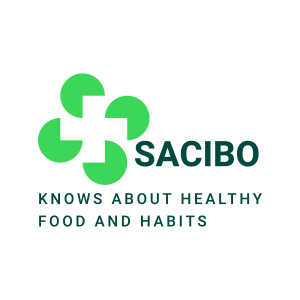
















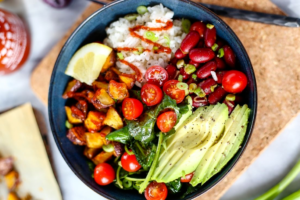






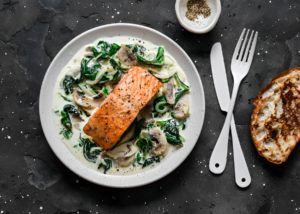

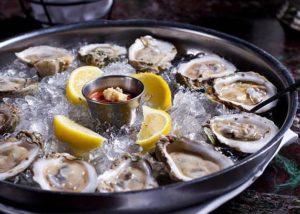





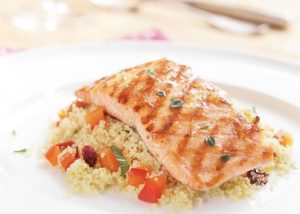














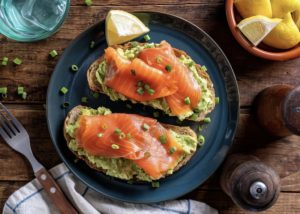



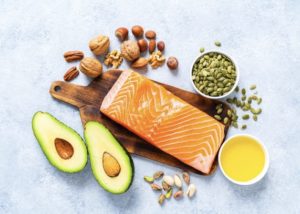












0 Comments